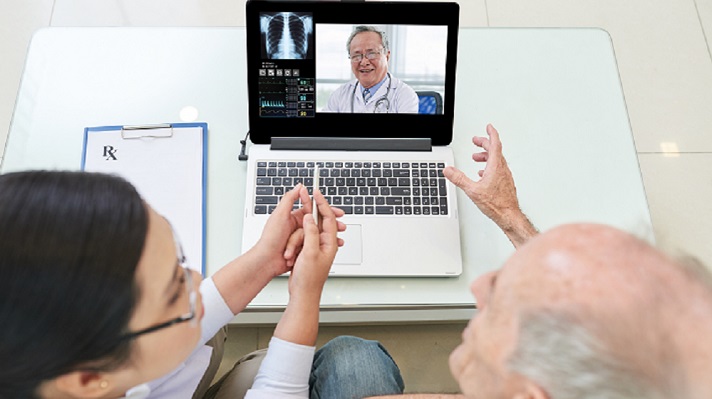Consulting with a doctor using a hand-held electronic device was unthinkable 50 years ago. Back then, remote medicine was the stuff of sci-fi films and futuristic novels. Today, it is reality. Not only has telehealth gone mainstream, but it has also drastically improved alongside mobile technology.
If you haven’t experienced app-based healthcare delivery, you have no idea what you’re missing. Combining the telehealth principle with mobile technology has completely changed the game. More importantly, it has change things for the better.
A Brief History of Telehealth
Although rudimentary telemedicine goes back to the turn of the 20th century, what we now consider modern telehealth was birthed with the advent of video chat. Beginning about 20 years ago, an emerging internet made it possible for doctors and patients in separate locations to consult via video.
The technology was clumsy and costly back then. That is one of the reasons it was so slow to catch on. But the combination of modern devices and incredibly high internet speeds makes first-gen video chat sessions seem almost quaint today.
A big boost for telehealth came when the smartphone was introduced. Smartphones offered a ton of promise right from the start. It wasn’t long after Apple started selling its first iPhone that technology companies started looking at the potential of app-based healthcare delivery.
The Retail Healthcare Kiosk
Before the introduction of video chat capabilities, telemedicine existed in the form of retail healthcare kiosks deployed in local pharmacies and grocery stores. Most of the kiosks did little more than check blood pressure and heart rate. And yet, they represented a way to get people to visit the pharmacy.
Those first-generation kiosks have been replaced by the latest and greatest telehealth technologies. Consider the healthcare kiosks manufactured by CSI Health. They offer a full range of diagnostic tools as well as real-time communication with remote healthcare providers. A customer can visit with a healthcare provider in a virtual setting that doesn’t compromise on diagnostics.
Personal and Corporate Telehealth
Now we have reached the point at which telehealth via mobile devices can offer on-demand healthcare delivery. On a personal level, individual consumers can download mobile apps that give them access to physicians, nurse practitioners, and physician assistants 24/7.
Some of the companies behind these mobile apps charge on a per-visit basis. Others offer monthly subscriptions, whereby customers can initiate as many virtual visits as they please without incurring any additional fees. The doctors on the other side of their screens can diagnose illnesses, prescribe medications, offer treatment plans, and even order tests.
On the corporate front, telehealth companies are offering bulk subscriptions that work much the same way as group health insurance. Subscription rates are based on the number of employees and the services the employer wants to offer. Delivery is provided through mobile apps and telehealth kiosks in the office.
Plenty of Service Options
The icing on the cake is that telehealth companies tend to offer plenty of service options. The most popular is arguably primary care. Virtual primary care all but eliminates the need for employees and their family members to visit the GP’s office in person. It is a huge benefit that employees love.
Other popular services include dermatology, on-demand urgent care, and behavioral health. Pretty much any service that doesn’t demand an in-person visit can be provided through telehealth.
Telehealth has come a long way in recent years. Much of its growth has occurred alongside similar growth in mobile technology. We can see the convergence of both in mobile telehealth apps that connect doctors and patients in cyberspace. It is truly an amazing thing to behold.
